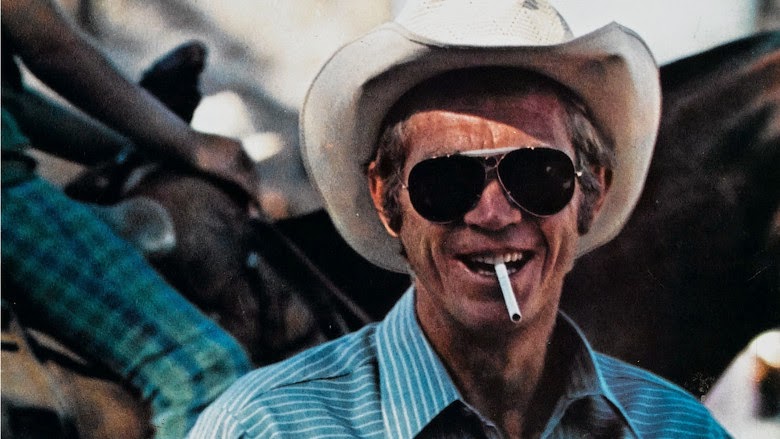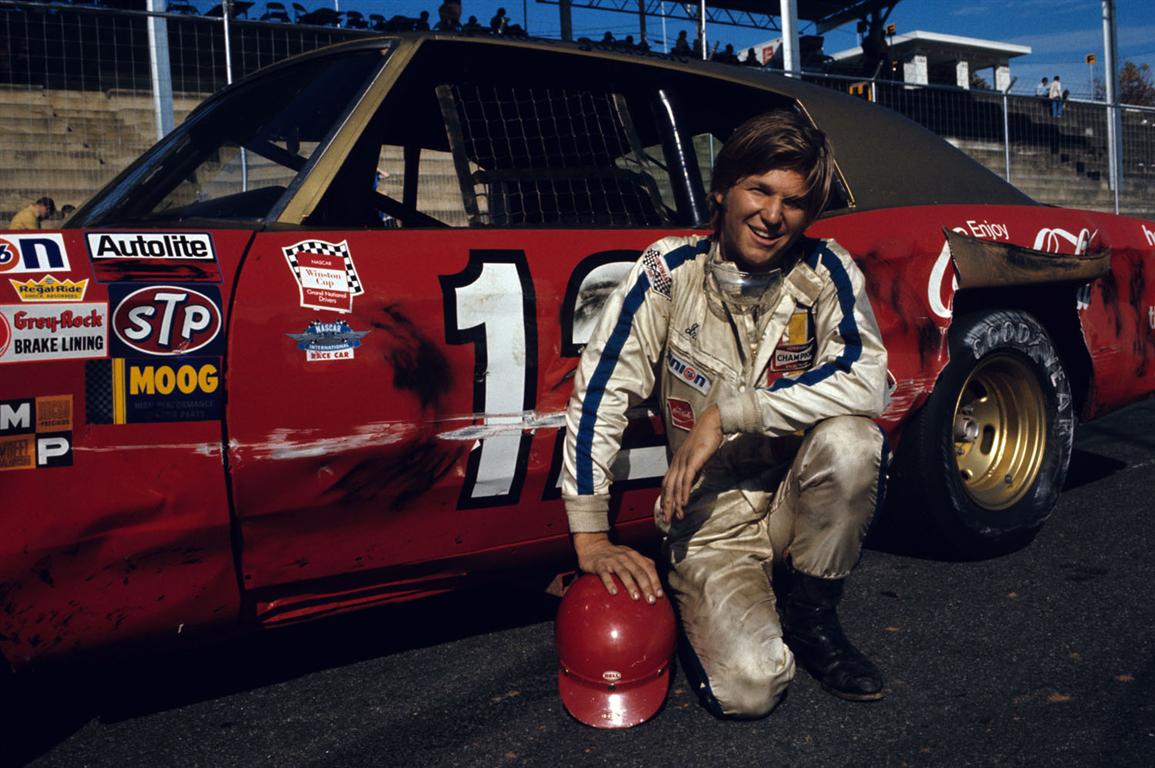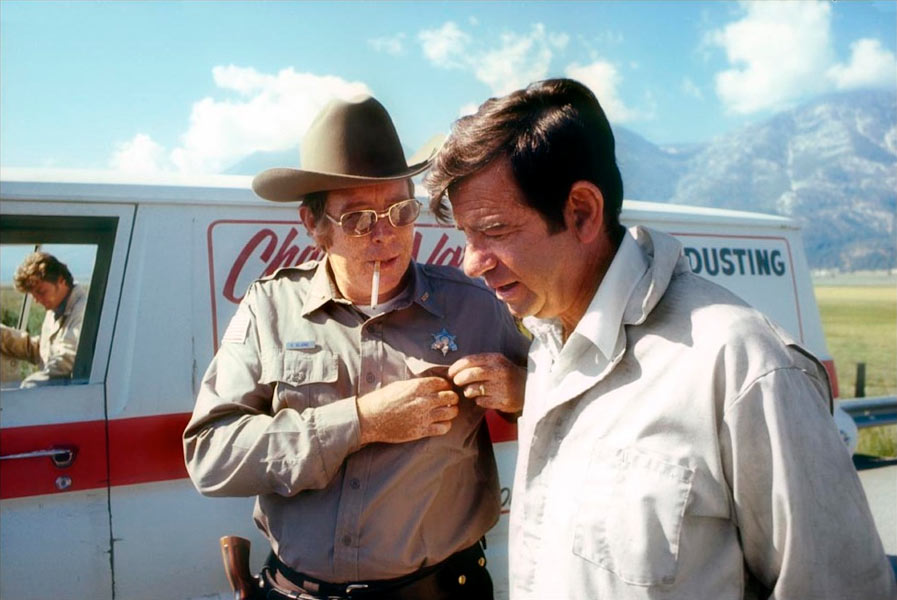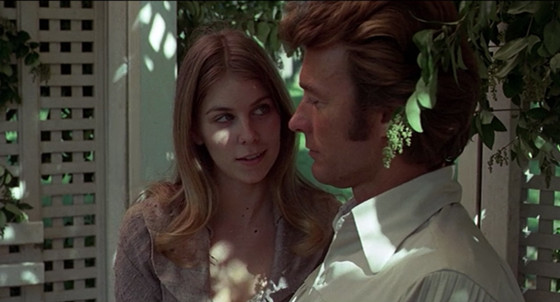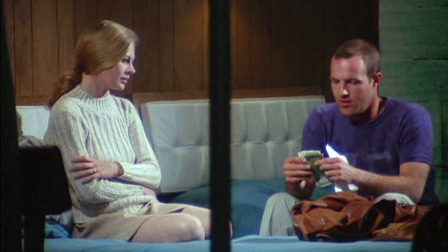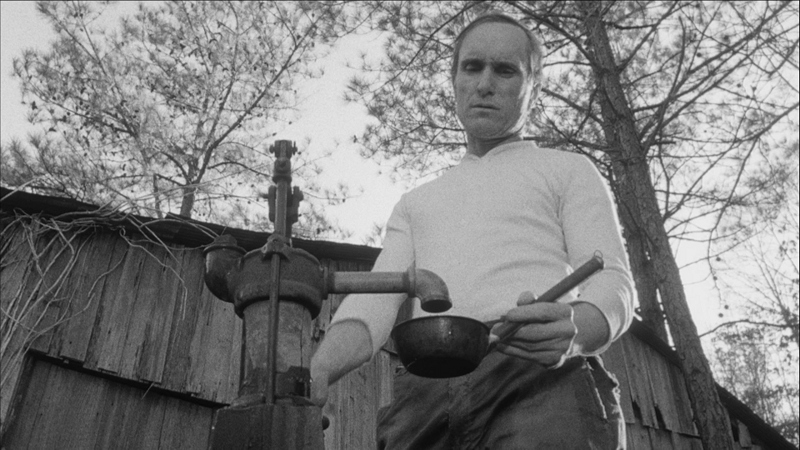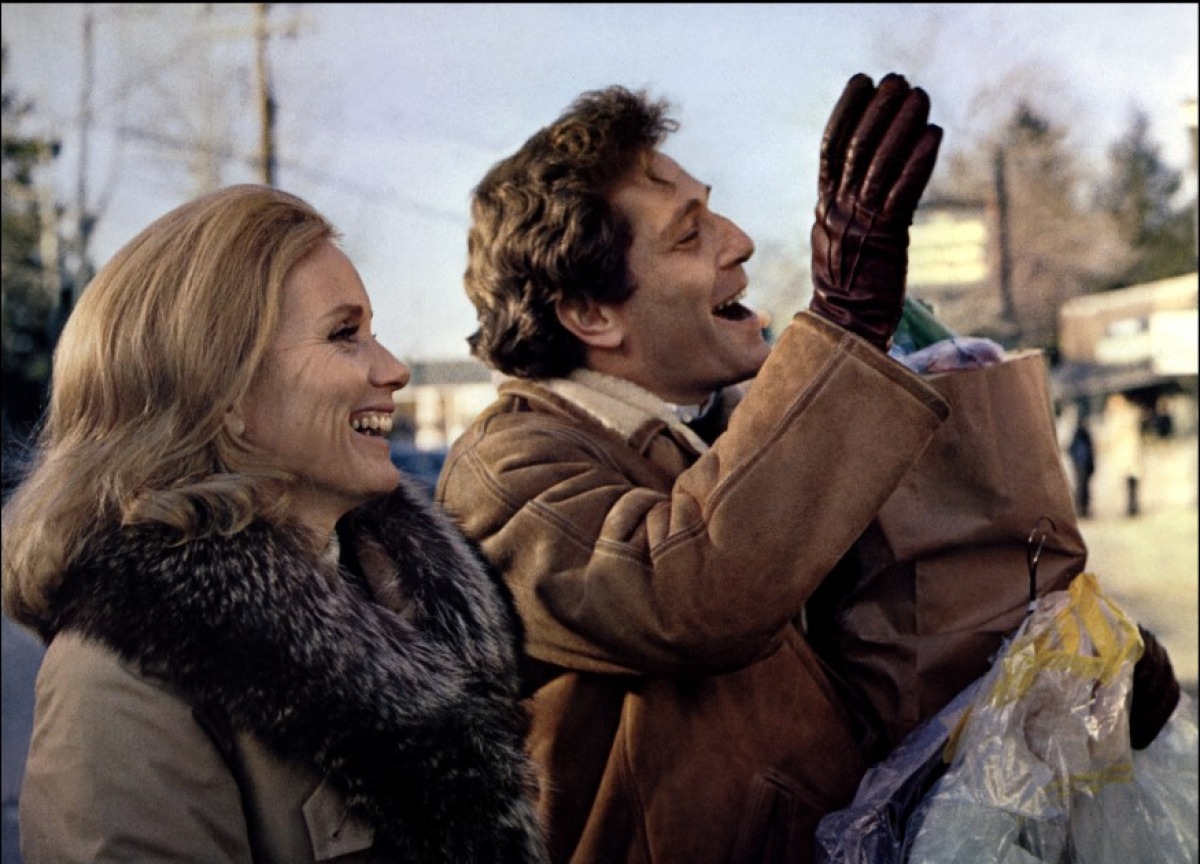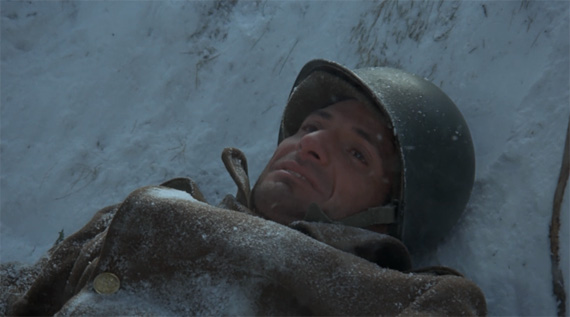16. Junior Bonner (1972)
Steve McQueen’s big first Artist’s effort didn’t make any more money than Pocket Money, but it stands as one of the best films of his career. McQueen had been one of the major stars of the 1960s, largely thanks to the career ministrations of first wife Neile Toffel. After their marriage ended at the beginning of the 70s, his career hit bumpy waters with director Sam Peckinpah’s typically violent The Getaway in 1971 ending up as his last big hit.
The often difficult star and notoriously difficult director hit it off and the actor gave the director his one big chance to create a film where half the cast didn’t die violently. The title character is (another) modern day cowboy, this time a rodeo rider who has seen better, more youthful days.
Still he’s good natured about the ravages of time and, as the film opens, is returning to his hometown of Prescott, Az for the first time in years for a rodeo but also to see his family. His greedy and materialistic brother (Joe Don Baker) is expendable, but his down to earth mom, Ruth (Ida Lupino) and beloved dad, Ace (Robert Preston) are another story.
However, Ruth and Ace are long estranged and there’s no mystery as to why. The charismatic man is like a guest star in everyone’s life, special for the few minutes he gives but then gone without a trace in no time flat. His big dream is to go to Australia and he’s trying to put the touch on everyone to make it happen. Only adoring Junior, who is realistic about his father, responds.
How did the biggest perpetrator of graphic mayhem in Hollywood make such a gentle film and have it seem so natural to him? Maybe that side was always there and he never got the chance to show it before or again, but he and McQueen produced the last really good film of their respective careers.
17. The Last American Hero (1972)
Though Jeff Bridges turned in many notable performances during the New Hollywood era, few films showcased his warm, vaguely counter-culture charm better than The Last American Hero.
Bridges portrays the title character, actually named Junior Johnson, a backwoods Southern boy who drives a mean, fast car while hauling the moonshine made by his dad, a criminal with a surprising amount of integrity. When dad gets caught and goes up, Junior, needing gainful employment, adapts his talents to stock car racing and proves to be a natural. However, it turns out that life on the right side of the law has lots of pitfalls as well.
Based on a true story, the film has a great feeling for local color, adroit direction by Lamont Johnson, a flavorful supporting cast (Geraldine Fitzgerald, Gary Busey, Ned Beatty, Art Lund, and Valerie Perrine, among others) and a surprisingly pointed script. Jim Croce’s theme song, I’ve Got A Name, was a big hit but, sadly, the film wasn’t.
18. Charley Varrick (1973)
Another veteran director who seemed to be waiting for New Hollywood was action specialist Don Siegal. Though he had his moments in the classic Hollywood era (Riot in Cell Block 11 and the eternal classic Invasion of the Body Snatchers), the freedoms of the later era seemed better suited to his tough sensibilities. A real gem was this dark caper film/character study in which Walter Matthau abandoned his usual grumpy but audience pleasing performance and actually ACTED!
Matthau plays the title character, a small time criminal who plans a rather petty bank robbery involving his wife and best friend, only to see it all go awry when he inadvertently steals the mob’s money and death and chaos ensue as both mob and law enforcement track him down. The film’s efficient – movie sensibility and cast of great veteran players (Joe Don Baker, Sheree North, Norman Fell, Felicia Farr, and others) turn what could have been a routine film into a small gem.
19. The Beguiled (1971)
Siegal’s favorite star actor and most ardent disciple was Clint Eastwood, who has always credited Siegal’s influence for his own successful directing career. After the success of 1971’s Dirty Harry (a seminal film of that era), the pair had a chit coming and they used it to make this film.
Often compared to the works of Ambrose Bierce and Edgar Allen Poe, The Beguiled chronicles the story of a wounded Union soldier (Eastwood), who stumbles into a remote private girl’s school behind Southern lines during the Civil War. He thinks that the seemingly helpless women and girls will soon be easily dominated. He is proven quite wrong.
Though Eastwood is his usual stalwart self, he is also easily dominated by the otherwise female cast including the great Geraldine Page as the school’s rather unhinged head mistress and Elizabeth Hartman as a deceptively fragile young teacher the man desperately tries to romance. Eastwood and Siegal had been on a box office role. This fine, shadowy, tense film put a stop to that for a while, but it may be their finest joint effort.
20. The Rain People (1969)
A key New Hollywood figure is Francis (Ford) Coppola. Forever remembered for writing and directing 1972’s The Godfather (often considered the great New Hollywood film), he had working in Hollywood for a good while, albeit with mixed results, by the time he made that film. Though not a hit, his best pre-Godfather film may well be the poignant The Rain People.
A superb Shirley Knight stars as a young wife who discovers that she is soon to be a young mother…and freaks completely out. Having not a clue as to what she’s actually doing and feeling good and trapped, she gets in the family car and takes off. Where is she going and what will she do when she gets there? Who can say?
One thing she does know is that the she doesn’t want the young football player (James Caan) suffering from severe, sport induced brain damage she picked up hitchhiking to go with her. Like a lost puppy, he won’t go away, though. Their story will come to a dramatically tragic end (which some thought overwrought).
Caan would later be cast in The Godfather, as would Robert Duvall, who has a prominent supporting role. Surely their fine work here helped get them those roles. Maybe not a masterpiece, The Rain People is still a very touching film and ties nicely into the early feminist vibe of the time.
21. Tomorrow (1972)
Another important friendship Robert Duvall made early on which flowered during the New Hollywood era was the one he shared with writer Horton Foote (who had written the classic 1962 film To Kill A Mockingbird, in which Duvall debuted in a small but crucial role). The two worked together a number of times (both winning Oscars for 1982’s Tender Mercies) but their true labor of love is this heartrending indie production (back when indie really meant a little film made with no money to speak of).
Based on a story by William Faulkner, and one of the finest adaptations of his work, the film centers around a farm worker (Duvall) in the rural south of the early 20th century. The lonely and inarticulate man stumbles on an abandoned pregnant woman (regional actress Olga Bellen), who is near her due date and who isn’t doing well. During the short period they have together, their very polite relationship deepens to love and causes the man to make a deeply moving vow in the face of tragedy.
Sadly, though, there will be no happy ending. Filmed in stark black and while by old school director Joseph Anthony, the film looks and feels like a newsreel and the actors, script, and direction never hit a false or condescending note. Most people who saw it caught it on PBS after a nanosecond theatrical release. Those who did see it were lucky to see such a sincere piece of art.
22. Loving (1970)
Director Irvin Kreshner’s big moment in the cinematic sun was when he was chosen to direct the second, and best, film of the Star Wars series, The Empire Strikes Back (1978). Producer George Lucas had wanted someone who could put more of a human element into the film and he chose Kreshner on the basis of this fine, sensitive film.
Brooks Wilson (George Segal) is a man torn in two. He is proud of his successful career, which nicely provides for the wife (Eva Marie Saint) and daughters he so loves. However, he also loves mistress Grace (Janis Wilson) and the thought that he might run away with her and fulfill his cherished ambition to become a real artist of note.
The film looks at the situation in a realistic way, knowing that dreams will stay dreams and that the characters must make the best of the hand they have been dealt. The compassion the actors (including a vibrant Sterling Hayden), director and script inject into this small, unnoticed film make it a gem.
23. Slaughterhouse Five (1972)
Few authors meant as much to the youth of the US in the counter-culture era as Kurt Vonegut, Jr. However, his challenging narratives, which often combined drama, comedy and his own brand of science fiction, appeared too daunting for the movies to tackle. That conception seemed to apply doubly to his tacitly considered masterpiece, Slaughterhouse-Five.
This tale of BIlly Pilgram, a man “unstuck in time” and effortlessly travelling between his mundane present day existence as a business and family man, his future life as a pampered zoo specimen kept by aliens on another planet, and, most tellingly, his survival as a World War II POW during the nightmarish fire bombing of Dresden was thought to be beyond cinematic limits.
However, director George Roy Hill, between the big hits of Butch Cassidy and the Sundance Kid (1969) and The Sting (1973), was able to get a film version green-lit. He employed no big names (the actors included Michael Sacks, Ron Liebman, Eugene Roache, and Valerie Perrine, who would enjoy some fame later). He had a decent but moderate budget. He had no renowned writing collaborators and the author did not participate.
Though the end result didn’t become a huge hit, the critics and audiences the film did get were quite surprised at how much of the feeling, ideas, and plot of the novel made it to the screen. As with The World According to Garp (1982), Hill pulled off a feat of cinematic adaptation.
